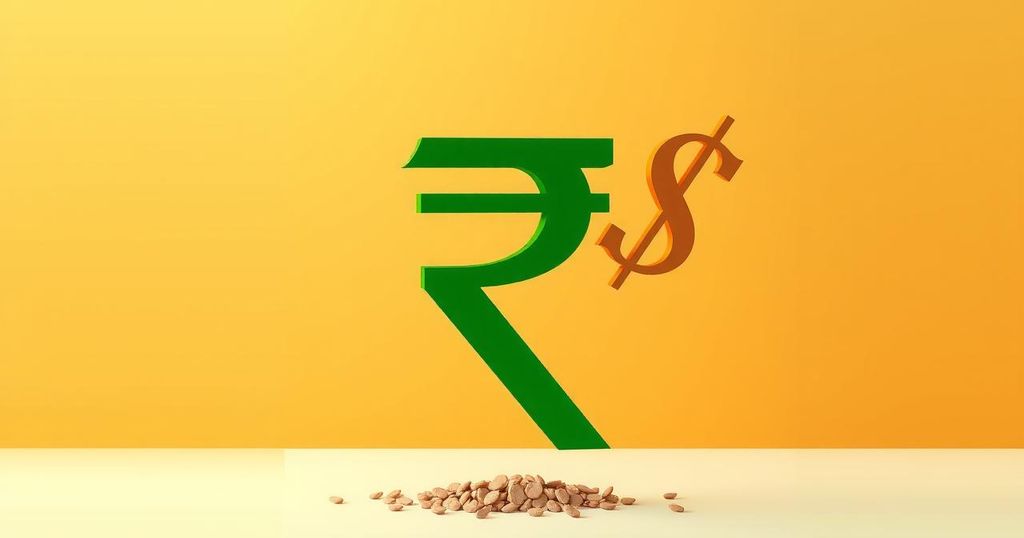Indian Rupee Records Longest Winning Streak Amid Dollar Weakness and Economic Factors

The Indian Rupee has recorded its longest winning streak in six months, closing at 86.57 against the US Dollar. Despite a sell-off from foreign investors, the Rupee gained 1.08% in March. Meanwhile, India’s trade deficit has decreased to $14.05 billion amid softer petroleum prices. Crude oil prices continue to rise, and the banking sector faces liquidity challenges, compelling potential RBI action.
The Indian Rupee has achieved its longest winning streak in six months, closing stronger against the US Dollar for five consecutive sessions. On Tuesday, the local unit strengthened by 23 paise, ending at 86.57 compared to the previous day’s closure at 86.80, as reported by Bloomberg. This marks the Rupee’s fifth consecutive day of gains, the longest streak since September of last year.
In March, the Rupee has gained 1.08 percent, reversing a trend of five months of declines. However, despite this strengthening, foreign portfolio investors have been selling off investments, with total sales reaching Rs 1.43 trillion this year, including Rs 4,488 crore sold on Monday, as indicated by NSE data. Meanwhile, the Dollar index has decreased by 0.04 percent to 103.32, experiencing a decline of over 3.6 percent this month, the steepest drop since November 2022.
In a related development, India’s merchandise trade deficit fell to a three-and-a-half-year low of $14.05 billion in February, attributed to significant declines in exports and imports driven by falling global petroleum prices and growing economic uncertainty. Concurrently, crude oil prices are increasing, with Brent crude rising by 1.45 percent to $72.10 per barrel and WTI crude increasing by 1.55 percent to $68.63 per barrel, reflecting tensions in the Middle East.
The banking sector is currently facing a liquidity shortfall of around Rs 2 trillion as of March 16, which may compel the Reserve Bank of India to intervene by absorbing a significant portion of inflows to stabilize liquidity and enhance forex reserves. In the stock market, Indian indices such as Nifty and Sensex have risen over 1 percent, supported by positive global market sentiments and strong domestic institutional buying activity.
In summary, the Indian Rupee has displayed resilience by achieving a five-day winning streak against the US Dollar, coinciding with a decline in the Dollar index. Despite ongoing foreign investment sell-offs and pressure from rising crude oil prices, the trade deficit has narrowed significantly. The liquidity challenge faced by the banking system highlights the intricacies of monetary management in current economic conditions, while domestic market indices show a positive trend due to favorable investor sentiment.
Original Source: www.business-standard.com








